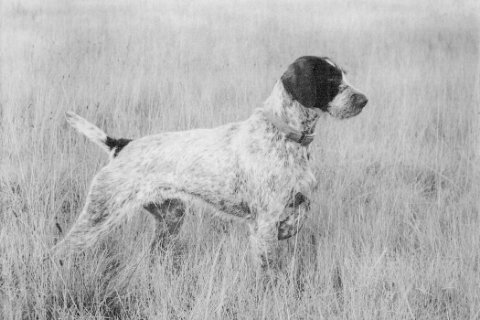
Be as Versatile as the Breed or Hunt.Show.Play.Repeat
Meet the Anvil Wires family where every German Wirehaired Pointer hunts, shows, and plays with purpose, proving true versatility in action.
Home » Meet The Breeds » German Wirehaired Pointer
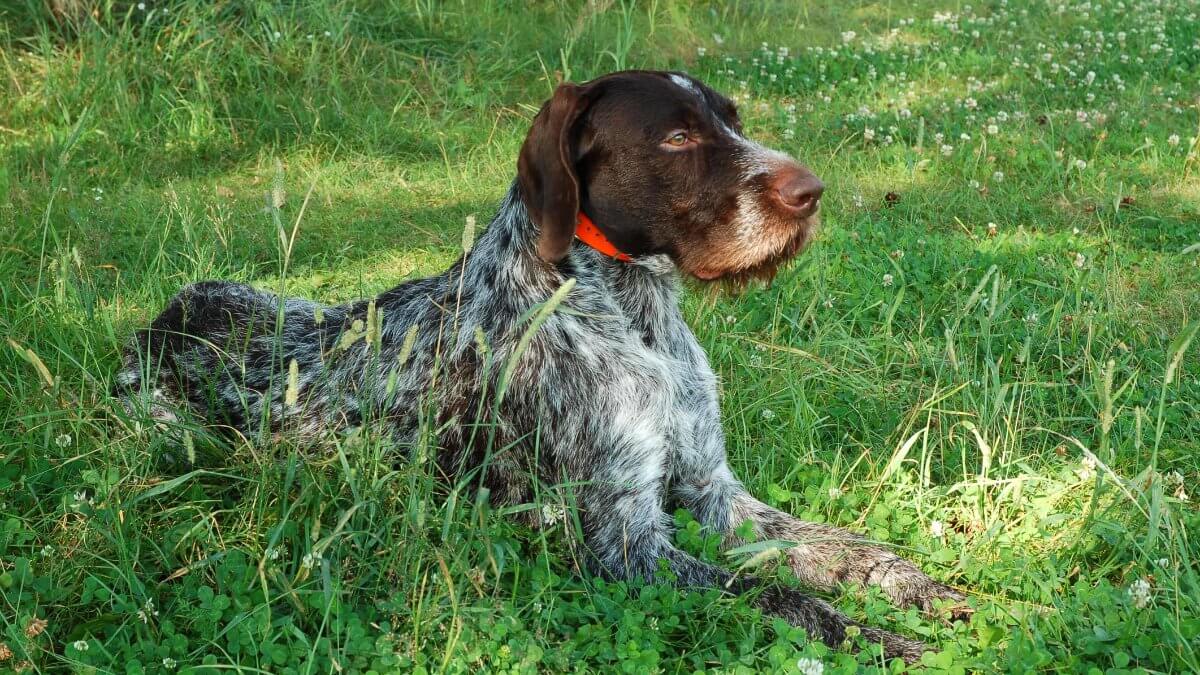
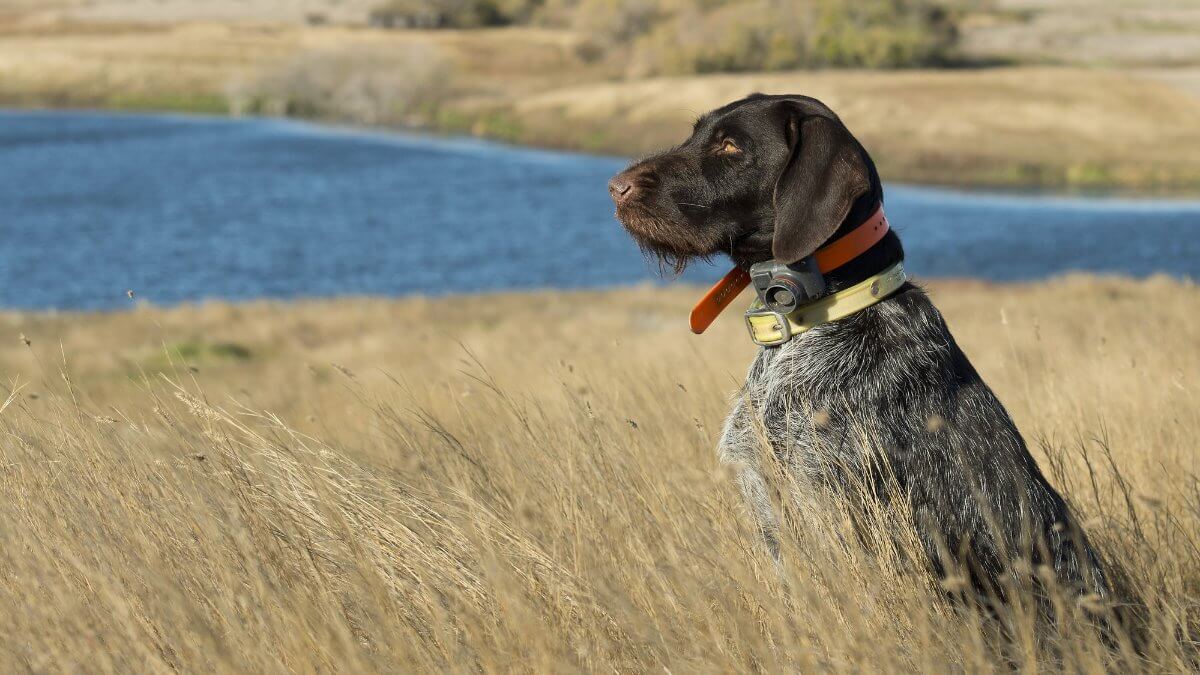

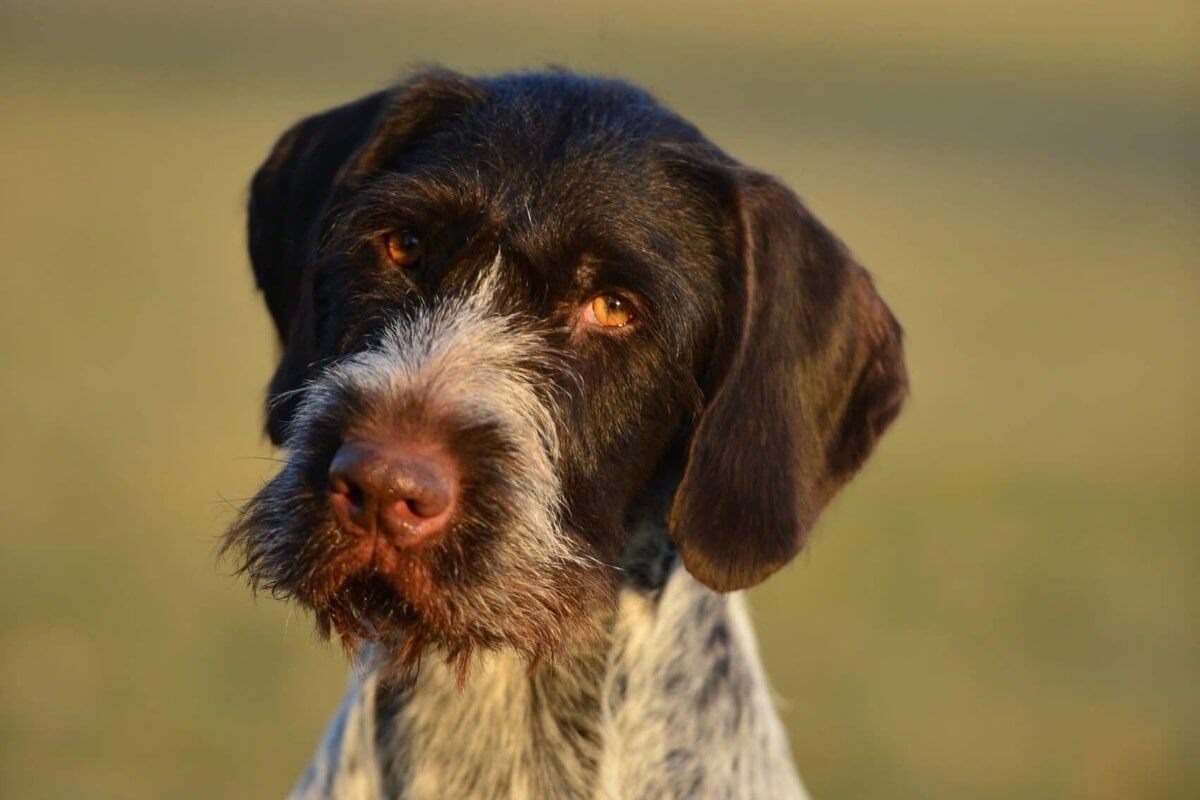

The German Wirehaired Pointer is a versatile and rugged sporting breed renowned for its exceptional hunting capabilities and loyal nature. Bred to excel in a variety of terrain and climates, this medium-to-large dog combines strength, endurance, and intelligence. With its distinctive wiry coat and keen expression, the GWP is equally adept as a hunting companion and a devoted family member.
Sporting
22 – 26 inches
50 – 70 pounds
14 – 16 years
| Country of Origin | Germany |
|---|---|
| Bred For | Hunting |
| Known For | Determination, Intelligence, Strength, Weather-Resistant Coat |
| Popularity | Moderate |
| Temperament | Aloof with Strangers, Enthusiastic, Loyal and Affectionate |
| Activities | Hunting, Running, Swimming, Hiking, Conformation Shows, Dog Sports |
The German Wirehaired Pointer, known as the Deutsch-Drahthaar in its homeland, is a relatively modern breed developed in Germany during the late 19th and early 20th centuries. Its creation stemmed from a desire to produce an all-purpose hunting dog capable of working on land and water, tracking game, pointing, and retrieving with equal proficiency. Before the breed’s development, hunters often relied on multiple breeds to fulfill these tasks, but the GWP emerged as a solution to unify these skills in one versatile dog.
The breed’s development involved careful crossbreeding of several established European breeds. The Pudelpointer, a cross between the Poodle and the Pointer, provided intelligence and water-retrieving abilities. The German Shorthaired Pointer contributed its keen nose and versatility, while the Wirehaired Pointing Griffon brought its characteristic harsh coat and rugged endurance. Other breeds, such as the Stichelhaar, are also believed to have played a role in refining the GWP’s physical and working traits. The goal was not only functionality but also a low-maintenance coat that could protect the dog from harsh weather and thorny underbrush.
By the early 20th century, the breed’s development was well underway, with German hunters and breeders meticulously refining its traits. In 1928, the breed was officially recognized in Germany and the first Breed Standard was established. This Standard emphasized both working ability and a particular physical appearance, ensuring the GWP remains a versatile and practical hunting companion.
The popularity of the German Wirehaired Pointer quickly spread throughout Europe due to the breed’s exceptional versatility and adaptability. It became especially favored in Germany where it was considered the ultimate hunting partner. The GWP was officially recognized by the Fédération Cynologique Internationale (FCI) in 1954.
The German Wirehaired Pointer’s journey to the United States began in the mid-20th century. American hunters and sporting enthusiasts were drawn to its hardy nature and versatility. The GWP was officially recognized by the American Kennel Club (AKC) in 1959, where it was categorized within the Sporting Group. Since then, it has become a well-respected breed in the United States, excelling in Field Trials, Hunt Tests, and Conformation Shows.
Male German Wirehaired Pointers typically stand between 24 and 26 inches tall at the shoulder, while females measure slightly less, between 22 and 24 inches. GWPs generally weigh 55 to 70 pounds.
The German Wirehaired Pointer is slightly longer than tall, with a strong, muscular body that maintains a blend of power and elegance. Its well-developed musculature and sturdy bone structure support its agility and endurance as a working field dog.
Texture: The German Wirehaired Pointer’s coat is a defining feature, designed to withstand harsh outdoor conditions. The outer coat is harsh, wiry, and weather-resistant, offering protection from thorns and brambles, while the dense undercoat provides seasonal insulation. This combination ensures the breed’s comfort and durability in varied terrains and climates.
| Standard Color | |
|---|---|
| Liver | y |
| Liver & White | y |
| Black & White | n |
| Standard Marking | |
|---|---|
| Ticked | y |
| Spotted | y |
| Roan | y |
| Roan & Ticked | y |
A Note About Color: The coat is solid liver or liver and white, usually either liver and white spotted, liver roan, or liver and white spotted with ticking and roaning. The head is liver, sometimes with a white blaze, and the ears are liver. Black in the coat is allowed in some countries, but is unacceptable in the US.
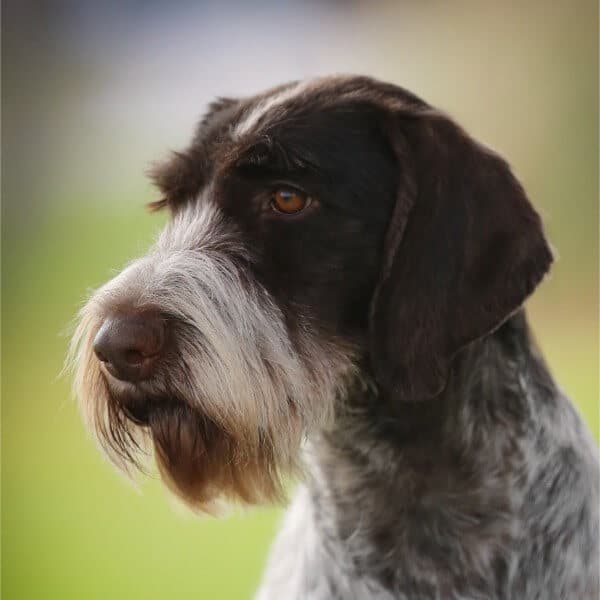
The German Wirehaired Pointer’s tail is set high and carried horizontally or slightly raised, reflecting its alert and confident demeanor. In the US, tails are often docked to about 40 percent of their length for traditional working purposes. In countries where docking is prohibited, the tail tapers naturally. Whether docked or undocked, the tail aids in balance and communication during work and play.
The German Wirehaired Pointer is a versatile and hardworking breed, but owning one comes with responsibilities. This dog thrives in active households that can provide mental and physical stimulation. While the breed’s loyalty and intelligence make these dogs excellent companions, they require consistent training, regular exercise, and attentive care to reach their full potential. Prospective caretakers should understand the breed’s daily needs to ensure a harmonious and fulfilling relationship.
The German Wirehaired Pointer is a typically robust breed with an average lifespan of 14 to 16 years. Its sturdy build and rugged coat help it endure tough conditions. But like all dogs, it can be prone to certain health issues. Maintaining regular veterinary check-ups, a balanced diet, and a healthy lifestyle will support a GWP’s overall well-being.
While the German Wirehaired Pointer is a healthy breed overall, it may be predisposed to the following health concerns:
The German Wirehaired Pointer is a loyal, intelligent, and energetic breed that thrives in active households. It is best suited for experienced caretakers who can meet both its mental and physical needs.
Highly affectionate and devoted to its family, this breed can be reserved around strangers. This is a reflection of its natural watchfulness.
The GWP generally gets along well with other dogs when properly socialized from a young age. These dogs can be good with children, although supervision is recommended due to the breed’s high energy levels.
The German Wirehaired Pointer forms strong bonds with its human companions and may struggle with being left alone for extended periods. They are happiest when active and engaged with their families.
A balanced diet is essential to support the active lifestyle of a German Wirehaired Pointer.
Puppies require high-quality puppy food that promotes healthy growth, divided into three to four meals per day. Adult dogs thrive on nutrient-rich food tailored for active breeds. Around 2.5 to 3 cups of dry food daily, split into two meals, is typically fed, but adjustments should be made based on age, activity level, and metabolism.
Caretakers of this breed should monitor their dog’s weight to prevent obesity, which can exacerbate joint issues. Fresh water should always be readily available, especially after exercise or in hot weather.
German Wirehaired Pointers are intelligent and eager to learn, making them relatively easy to train. However, the breed’s independent and assertive nature requires a consistent trainer who uses positive reinforcement techniques.
The breed’s strong hunting instincts can lead to a distracted dog, so early socialization and obedience training are essential for channeling a GWP’s energy appropriately.
These dogs have a moderate tendency to bark, often as an alert to unfamiliar activity. However, proper training can help to manage this behavior while preserving the GWP’s effectiveness as a watchdog.
The versatility of the German Wirehaired Pointer makes this breed an excellent candidate for advanced training in activities such as Agility, Field Trials and Hunt Tests, and Obedience competitions. At home, a securely fenced yard, or leash control at all times, is a must.
The German Wirehaired Pointer is a high-energy breed that requires daily physical and mental stimulation. At least one to two hours of vigorous activity, such as running, hiking, or swimming, is ideal for maintaining good health and overall happiness.
| Energy Level | High |
|---|---|
| Exercise Requirements | 2 Hours/Day, Daily Walks, Daily Exercise, Swimming |
With its playful nature, the GWP makes an excellent companion for outdoor adventures. A lack of exercise, it should be noted, often leads to boredom and destructive behaviors.
The German Wirehaired Pointer thrives on activities that engage a dog’s natural hunting instincts, such as Scent Work and Tracking. Regular walks alone are insufficient; incorporating more intensive exercise is crucial to meeting the needs of this energetic hunter.
The German Wirehaired Pointer’s wiry coat requires regular maintenance to stay in good condition. Weekly brushing helps to remove loose hair, while more frequent grooming may be needed during seasonal shedding.
| Coat Type | Harsh, Flat-lying, Wiry |
|---|---|
| Grooming Requirements | Weekly Brushing, Occasional Bathing, Intermittent Stripping, Routine Ear Cleaning, Periodic Nail Trimming, Regular Tooth Brushing |
This breed is a moderate shedder, and its weather-resistant coat naturally repels dirt and debris. Bathing should be done sparingly, as frequent washing can strip the coat of its protective oils.
Routine ear cleaning is necessary to prevent infections, especially since their hanging ears can trap moisture and debris. Regular nail trimming and dental care are also essential parts of their grooming routine.
The German Wirehaired Pointer can adapt to various living environments, provided it receives ample exercise and mental stimulation. While these dogs can sometimes manage living in an apartment, a house with a securely fenced yard is ideal for meeting their energy needs.
The GWP handles cold weather well due to its dense coat, but it may require extra protection in extreme cold. These dogs are also capable of tolerating hot weather well, although care should be taken to avoid overexertion during excessively high temperatures.
As devoted and affectionate companions, German Wirehaired Pointers thrive in homes where they are active participants in daily family life, both indoors and outside where they can explore and work.
German Wirehaired Pointer puppies are energetic, curious, and intelligent, displaying their active nature from an early age. Early socialization and consistent guidance are essential to channel their energy and help them develop into well-behaved and well-rounded adults.
Caring for a German Wirehaired Pointer puppy starts with creating a safe and stimulating environment. Puppy-proofing the home is important, as the breed’s natural curiosity can lead a puppy to chew on harmful household items. Providing chew toys and interactive play helps to redirect a pup’s energy in positive ways.
Early training and socialization are critical for this breed. Puppy training classes offer structured learning and opportunities for positive interactions with other dogs and people, while basic commands and crate training lay the foundation for good behavior.
The GWP puppy thrives on a balanced, high-quality diet tailored to its growth and energy needs. Small, frequent meals throughout the day prevent overeating and support healthy development. Regular veterinary check-ups are essential to monitor growth, administer vaccinations, and establish deworming and flea prevention schedules.
Exercise for the German Wirehaired Pointer puppy should be age-appropriate and moderate to avoid straining developing joints. Short walks and supervised play sessions during the first year of life provide sufficient activity until the pup is ready for more vigorous exercise.
The German Wirehaired Pointer is recognized by the world’s leading registries and kennel organizations, which categorize the breed into a specific Group based on its unique characteristics. This breed is recognized worldwide under the following Group designations:
| Organization | Group Designation |
|---|---|
| AKC (American Kennel Club) | Sporting |
| UKC (United Kennel Club) | Gun Dog |
| CKC (Canadian Kennel Club) | Sporting Dogs |
| ANKC (Australian National Kennel Council) | Gundogs |
| RKC (The Royal Kennel Club) | Gundog |
| FCI (Fédération Cynologique Internationale) | Group 7 – Pointing Dogs; Section 1.1– Continental Pointing Dogs |
The ideal German Wirehaired Pointer is described by a Breed Standard that is approved by each of the world’s leading registries and kennel organizations. The Breed Standards for this breed may be found in the following links:
| Organization | Breed Standard |
|---|---|
| American Kennel Club | AKC German Wirehaired Pointer Breed Standard |
| United Kennel Club | UKC German Wirehaired Pointer Breed Standard |
| Canadian Kennel Club | CKC German Wirehaired Pointer Breed Standard |
| Australian National Kennel Council | ANKC German Wirehaired Pointer Breed Standard |
| The Royal Kennel Club | RKC German Wirehaired Pointer Breed Standard |
| Fédération Cynologique Internationale | FCI German Wirehaired Pointer Breed Standard |
German Wirehaired Pointer rescue groups play a critical role in helping abandoned, displaced, or surrendered dogs find loving homes. These organizations are dedicated to rescuing, rehabilitating, and rehoming GWPs, ensuring they receive the care and attention they need.
Yes, German Wirehaired Pointers shed moderately, especially during seasonal coat changes. Regular brushing helps to control shedding and keeps their wiry coat in good condition.
No, German Wirehaired Pointers are not considered hypoallergenic. While their wiry coat may shed less than some breeds, they can still produce dander and allergens.
German Wirehaired Pointers typically live 14 to 16 years. With proper care, regular exercise, and a healthy diet, they can enjoy a long, active life.
Yes, German Wirehaired Pointers are loyal and affectionate family dogs. They bond closely with their human companions and are especially well-suited for active households.
German Wirehaired Pointers have a moderate tendency to bark, often alerting their families to strangers or unusual activity. With proper training, unnecessary barking can be minimized.

Meet the Anvil Wires family where every German Wirehaired Pointer hunts, shows, and plays with purpose, proving true versatility in action.
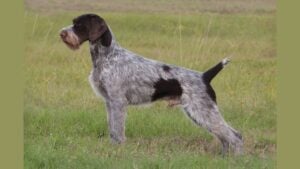
Discover how the German Wirehaired Pointer’s rugged coat defines its purpose, versatility, and enduring hunting heritage.

Explore the German Wirehaired Pointer’s history, temperament, coat, and structure – bred for versatility in field and home.

Judging the German Wirehaired Pointer: prioritize function, rugged versatility, and practical coat for this skilled hunting companion.
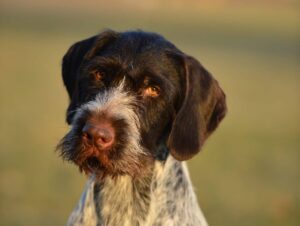
It’s important to note that the (GWP) German Wirehaired Pointer coat is this breed definition. Read more about the all important coat.
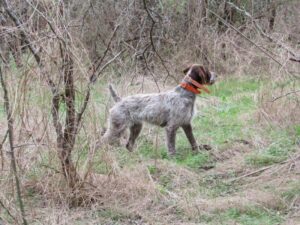
When judging German Wirehaired Pointer breed, judges should determine which dog is most suited to field work—based on the Breed Standard.

Laura Reeves of The Scotia Kennel shares insights on GWPs, breeding ethics, coat standards, and the future of purebred dogs.

Afterhours Kennel’s Alexis & Christi Chism share their passion for GWPs & BFdBs, breeding with purpose, health, and legacy in mind.

Alexis Chism is the breeder behind Afterhours Kennel. Read about the kennel’s beginnings, puppies, and much more!

Diane Turner is the breeder behind Wireworks/CanDo German Wirehaired Pointers. Read about the kennel’s beginnings, puppies, and much more!

Laura Reeves is the breeder behind The Scotia Kennel German Wirehaired Pointers. Read about the kennel’s beginnings, puppies, and much more!
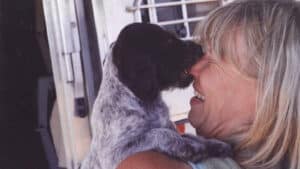
Judy Cheshire is the breeder behind Heywire German Wirehaired Pointers. Read about the kennel’s beginnings, puppies, and much more!
The best way to ensure a long and happy relationship with a purebred dog is to purchase one from a responsible breeder. Not sure where to begin?
Contact the National Parent Club’s Breeder Referral Program, which is listed on the AKC Breeder Referral Contacts page.
